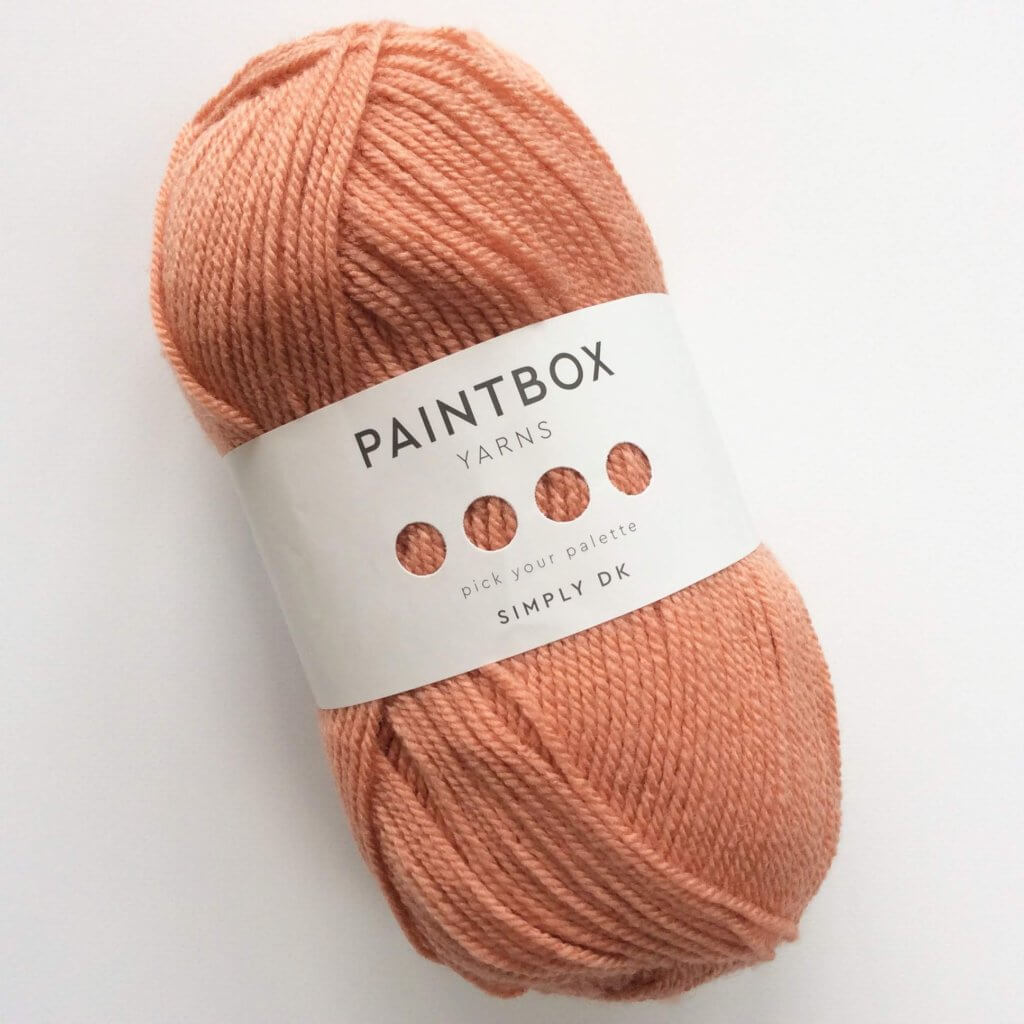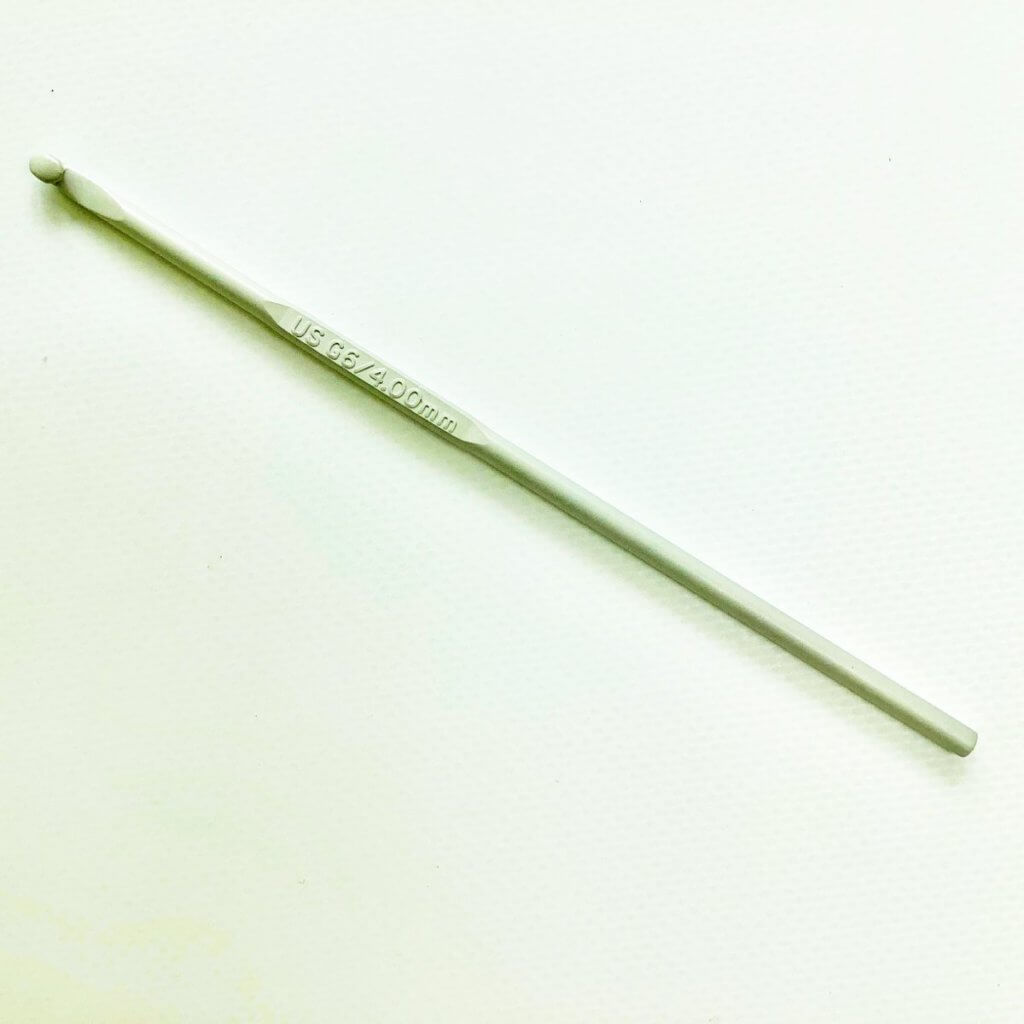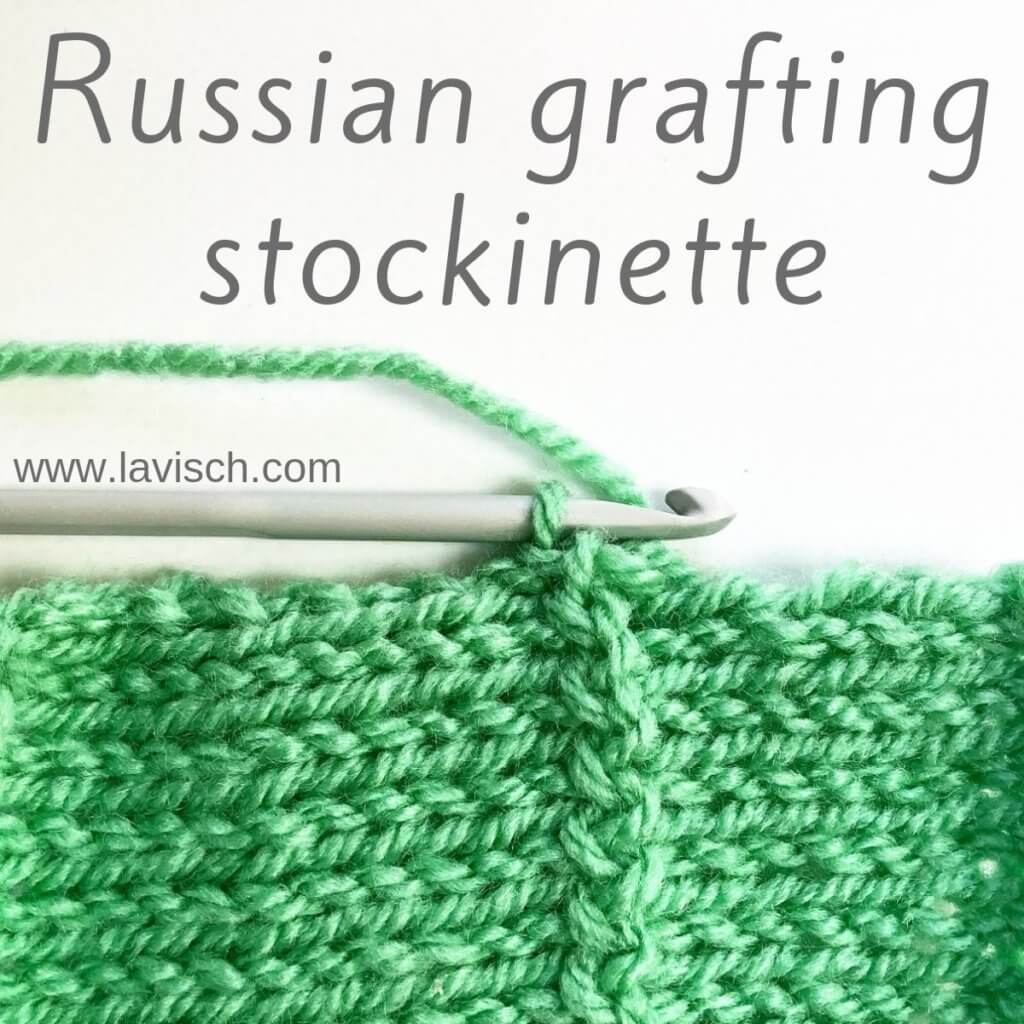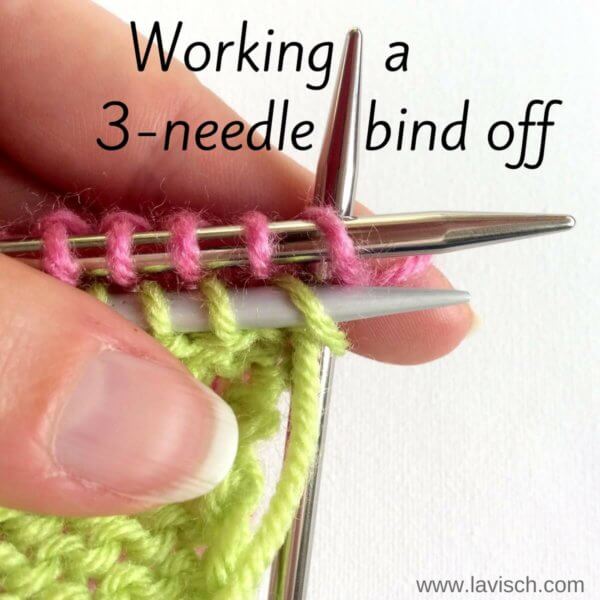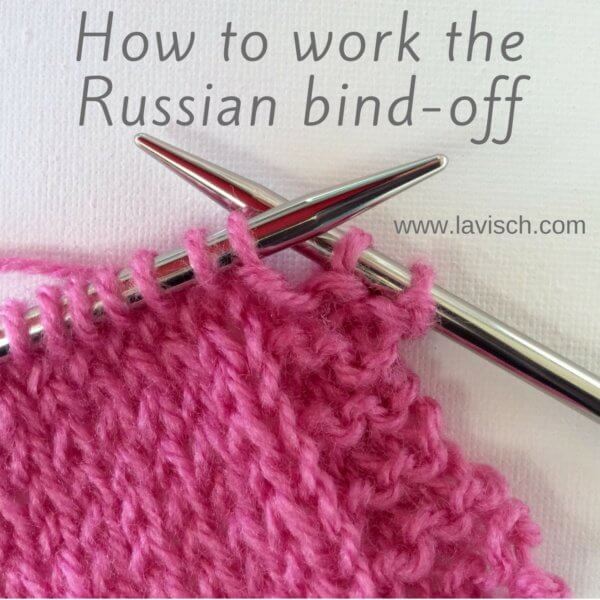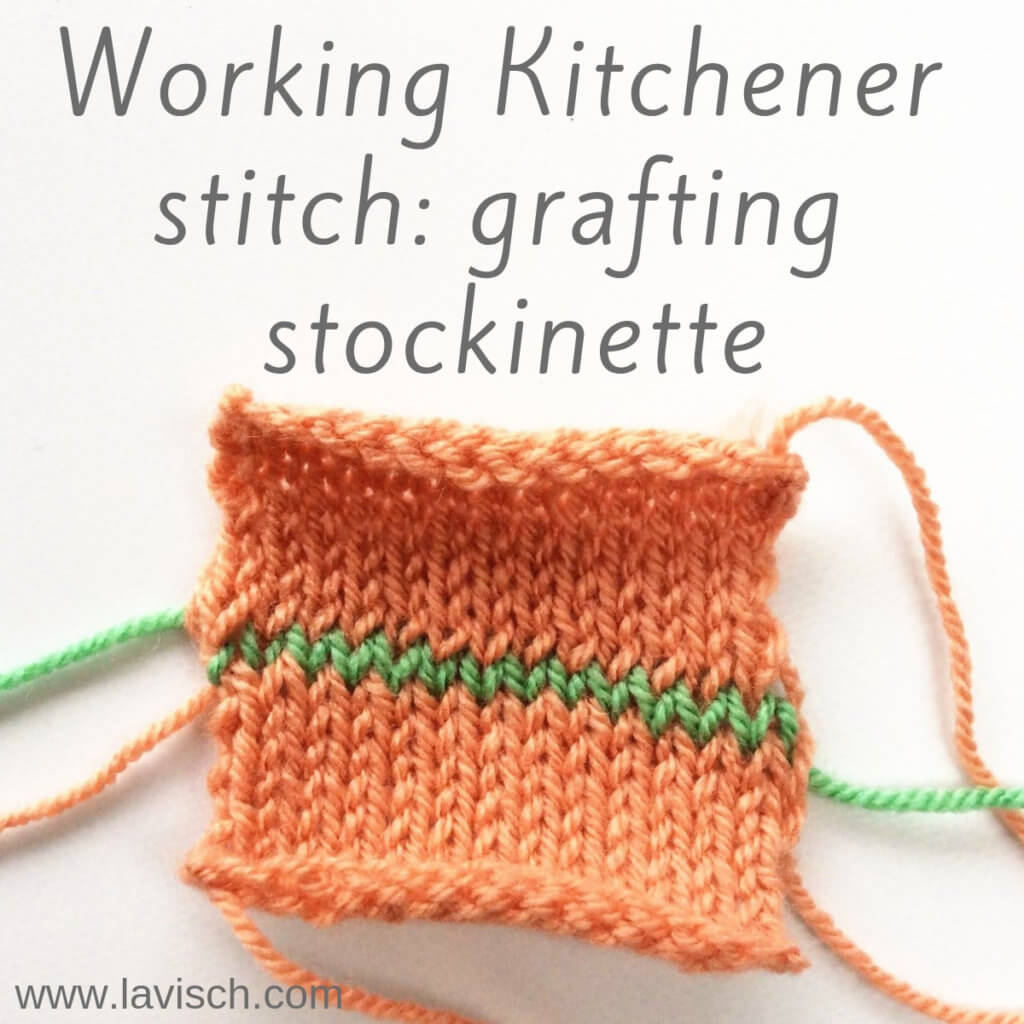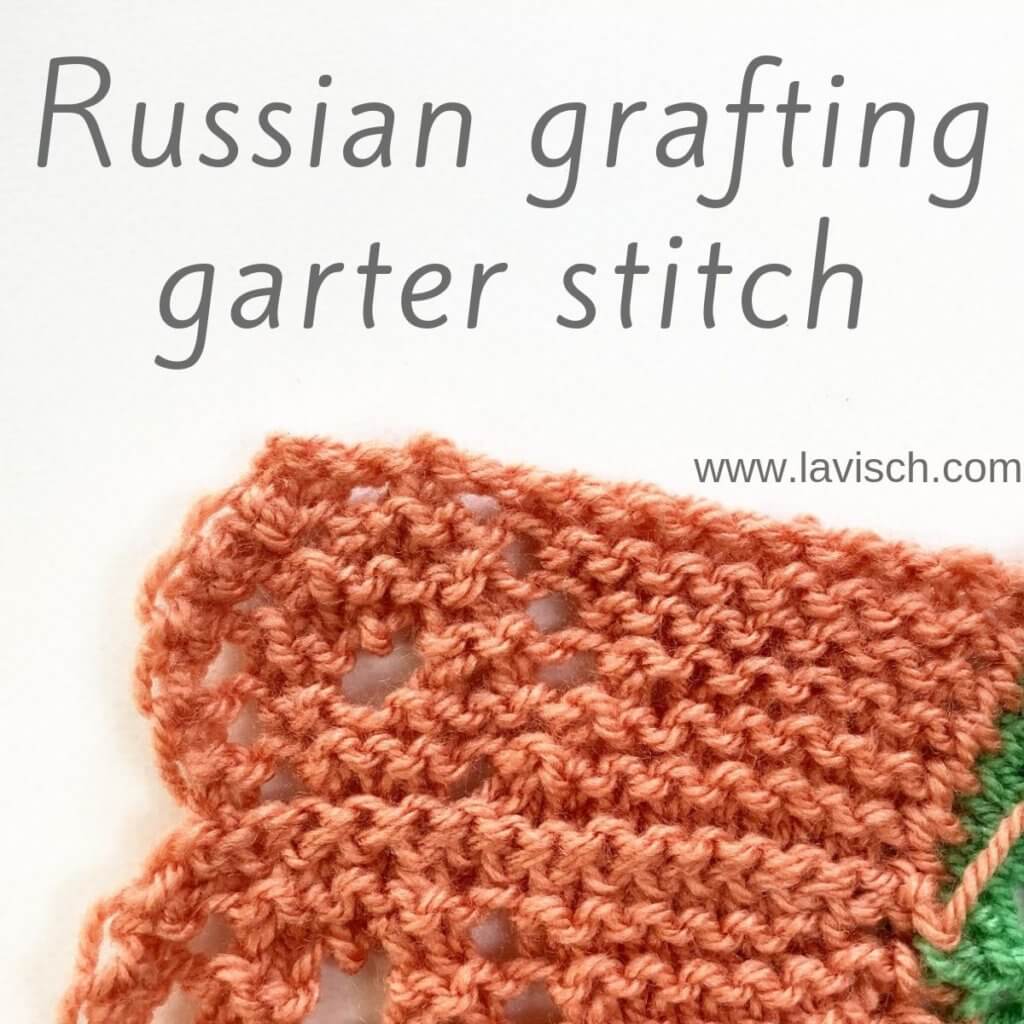
Russian grafting is a method of joining live knitting stitches together. It’s an alternative to the Kitchener stitch and is a quick and easy method for finishing off your knitted piece. In this post, I’ll show you the specifics for Russian grafting garter stitch. Of course, this method has pro’s and cons when compared with the Kitchener stitch, which I’ll go into below.
Pro’s
- When used to join garter stitch pieces together, the seam blends in with the garter stitch ridges.
- No working yarn is necessary, this makes this method, not a “true” grafting method.
- When grafting with this method, the stitches of the pieces to be joined align better than with Kitchener stitch grafting. This can be desirable when using patterning.
Con’s
- Since Russian grafting is worked by pulling existing stitches through other stitches, there is no way to adjust the tension of the graft.
- The seam will be visible if it’s used on a very open lace fabric, even if it’s garter-stitch-based.
Materials used
Yarn: * Paintbox Yarns Simply DK, a good value, good quality 100% acrylic yarn, here in the colors 125 Spearmint Green and 155 Vintage Pink.
A crochet hook in the same size or slightly smaller than your knitting needles. For example this * Pony Aluminum Crochet Hook in size 4 mm.
Russian grafting step-by-step
I’ve read that Russian grafting is a seaming technique commonly seen in patterns for traditional Orenburg shawls with garter-stitch-based lace edgings. For this reason, in this tutorial, I’m showing you how it’s done with the help of a swatch of an applied garter stitch lace border. It’s a miniature version of the edging on my Full Fade Hap.
Since I didn’t have the time to knit it all around the center square I just did the provisional cast-on followed by one repeat on the right in the below picture. On the left, you can see a repeat of the edging plus turning the corner minus the very last row, just as in my Full Fade Hap. The reason I’m omitting this last row is that we otherwise have a row of purl bumps on each needle. When grafted together, this gives a very bulky and visible seam. Without that last row, the grafted seam is much less notable.
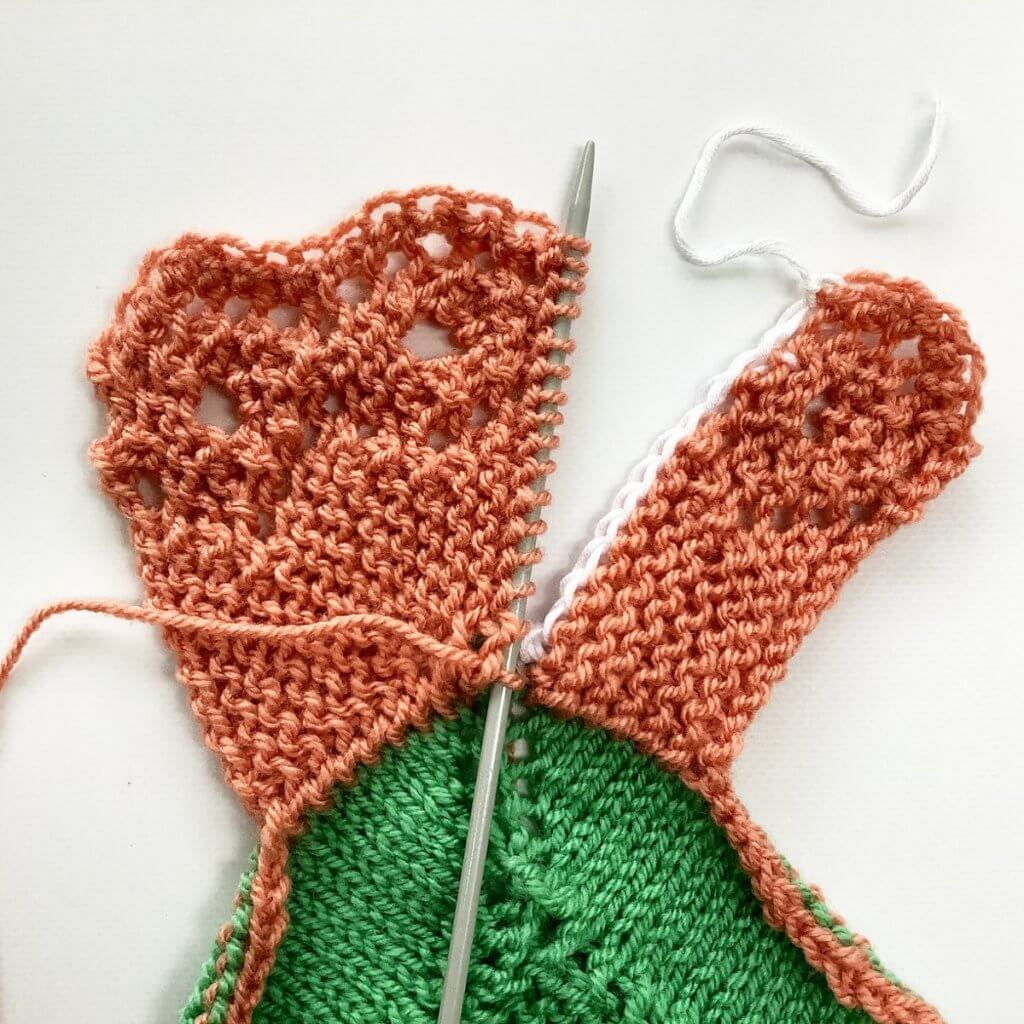
Preparation
First is undoing the provisional cast-on on the right piece and placing it on a knitting needle, starting at the body side of the waste yarn. It isn’t visible in this picture, but that’s where the waste yarn chain is, indicating the point where it can be undone easily. Make sure to place the stitches correct (not twisted) on the needle.
Please note that in this example the provisional cast-on was 15 stitches (needed for the lace patterning to start correctly), while there are 16 live stitches on the left (15 from the border and 1 remaining live body stitch). To solve this I picked up an extra stitch at the shawl body side.
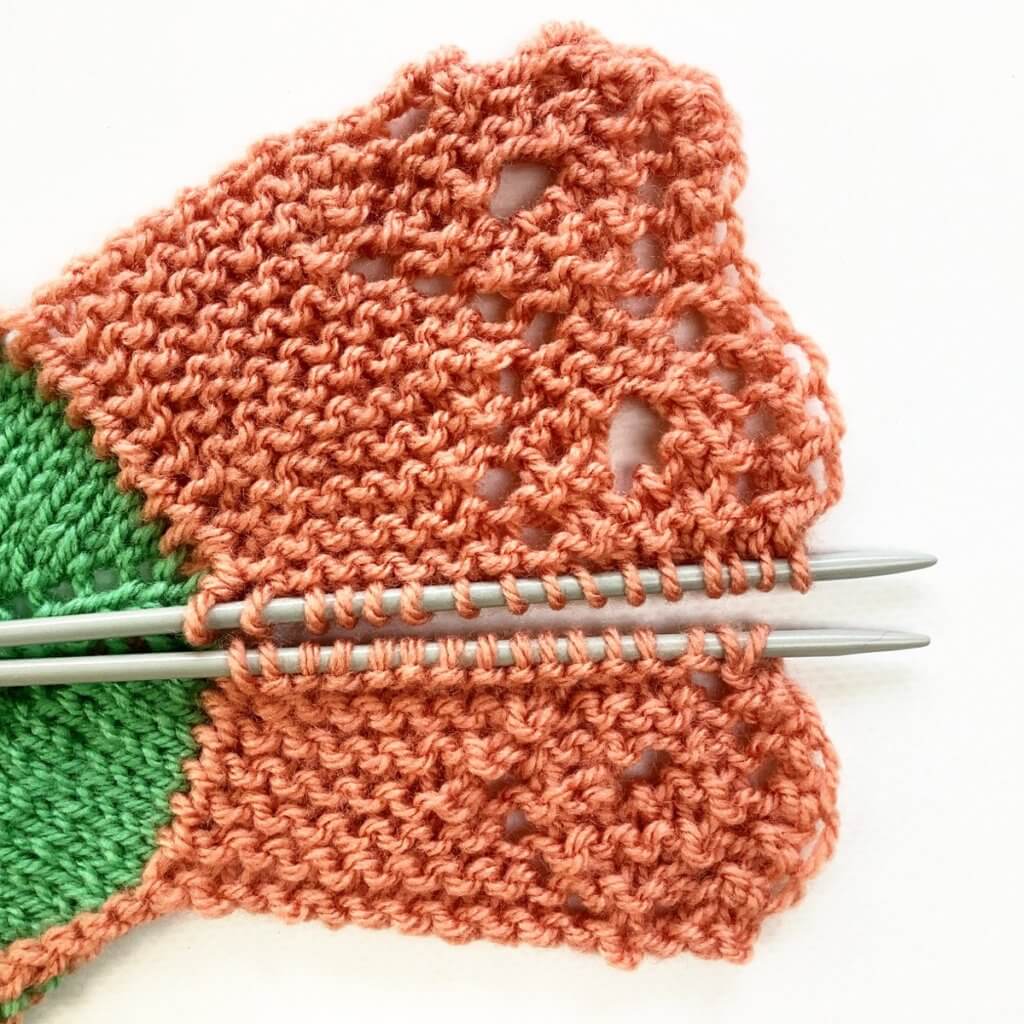
I’ve turned everything 90 degrees clockwise. Make sure the right side is facing and the yarn tail is on the left side. Now we’re ready to start the actual Russian graft.
Set-up
1. Back needle: Insert the crochet hook purlwise through the first stitch on the needle ….
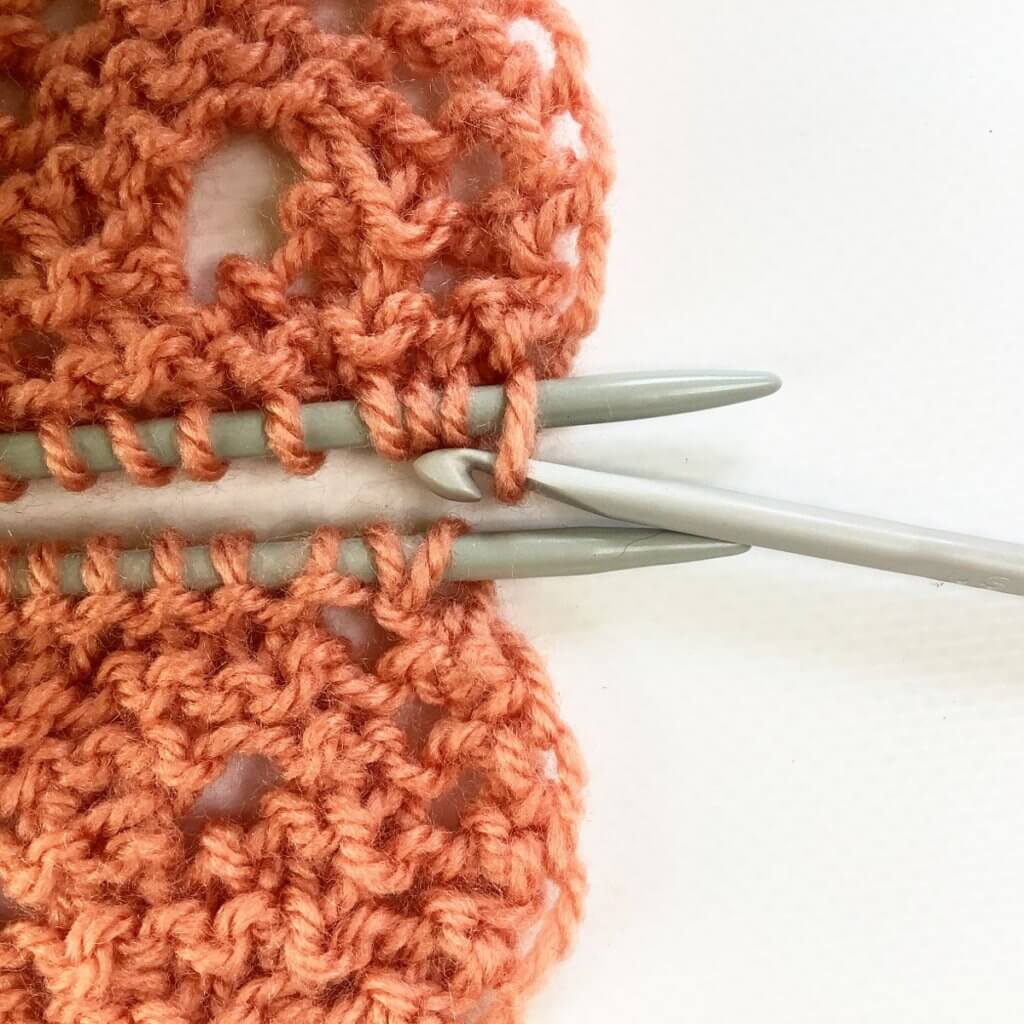
2. … and slide it off the needle.
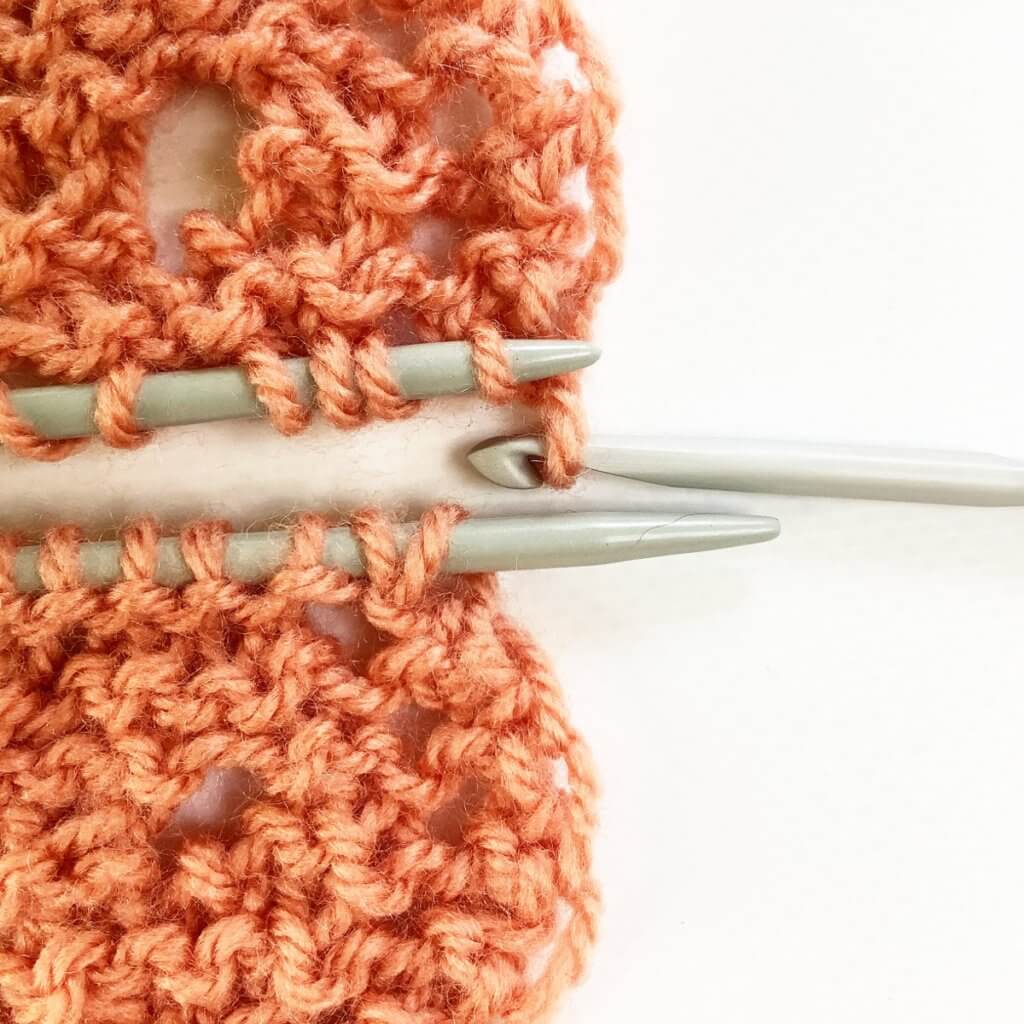
3. Front needle: Insert the crochet hook purlwise through the first stitch on the needle and slide it off the needle. This is similar to what you did in steps 1 and 2.
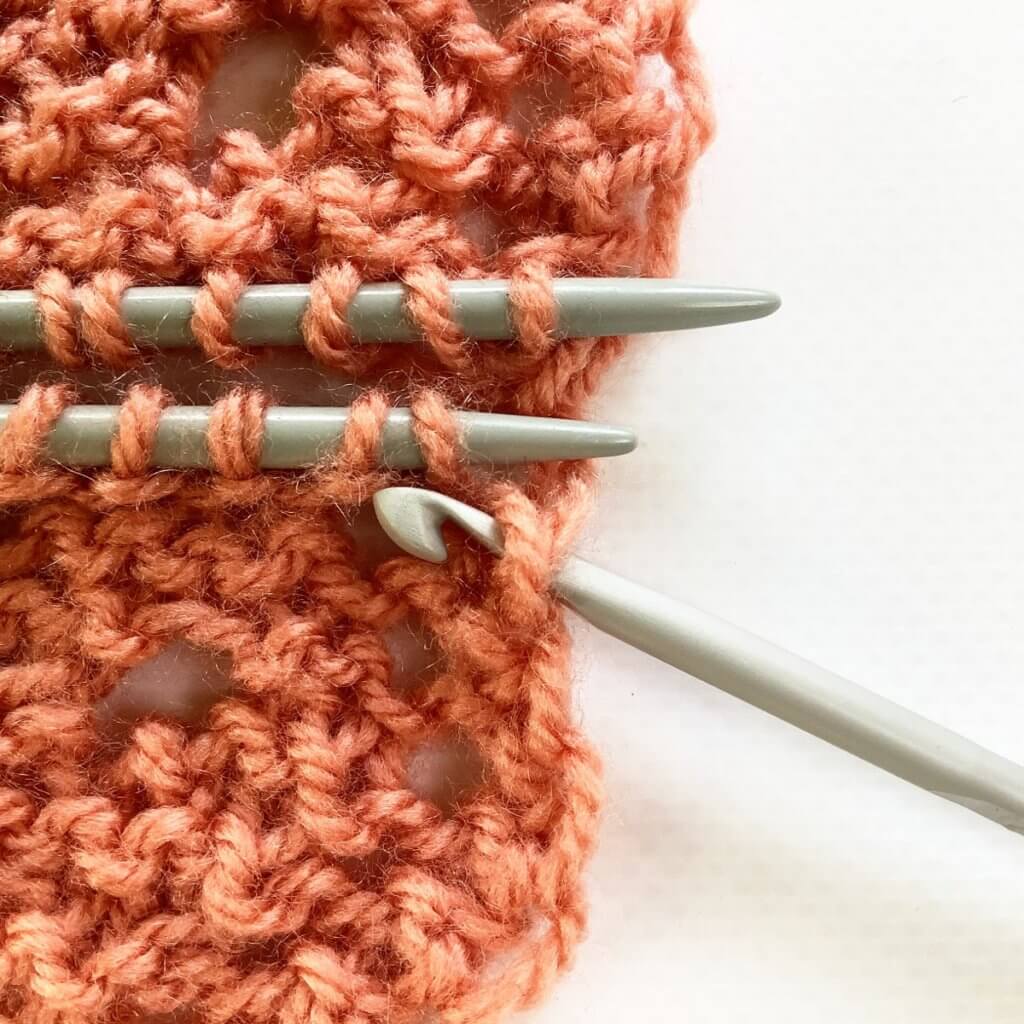
4. Now pull this second stitch through the first stitch on the hook, so only 1 loop remains on the crochet hook.
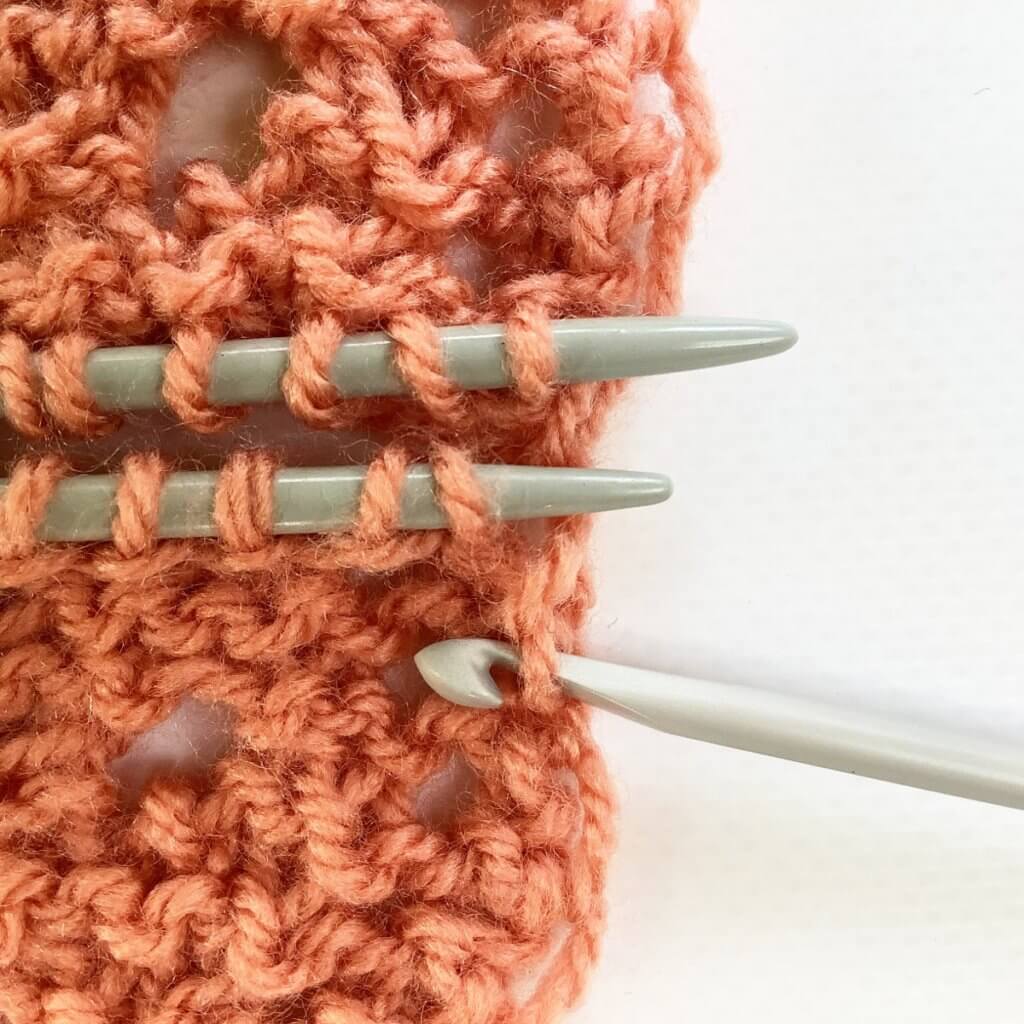
Repeat
1. Back needle: Insert the crochet hook knitwise through the first stitch and slide it off the needle.
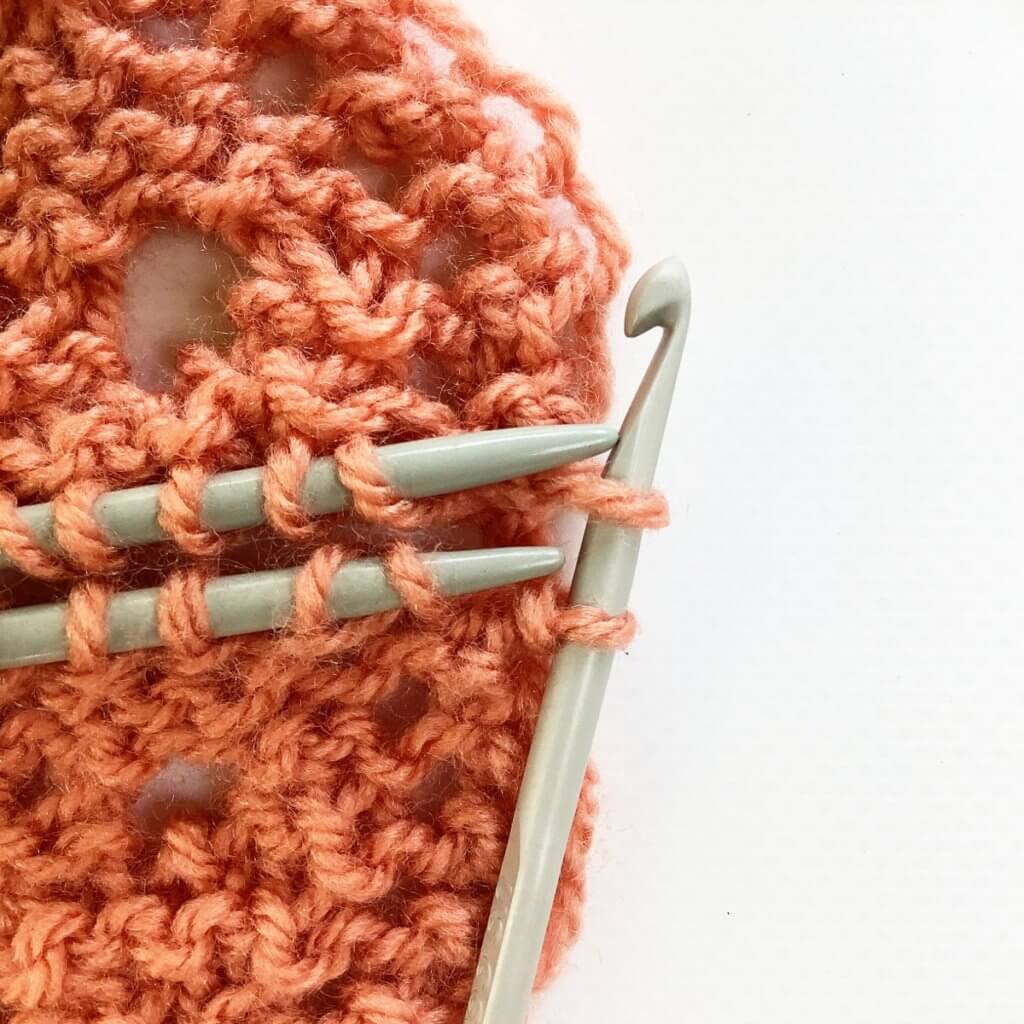
2. Pull this last stitch through the first stitch on the hook, so only 1 loop remains on the crochet hook.
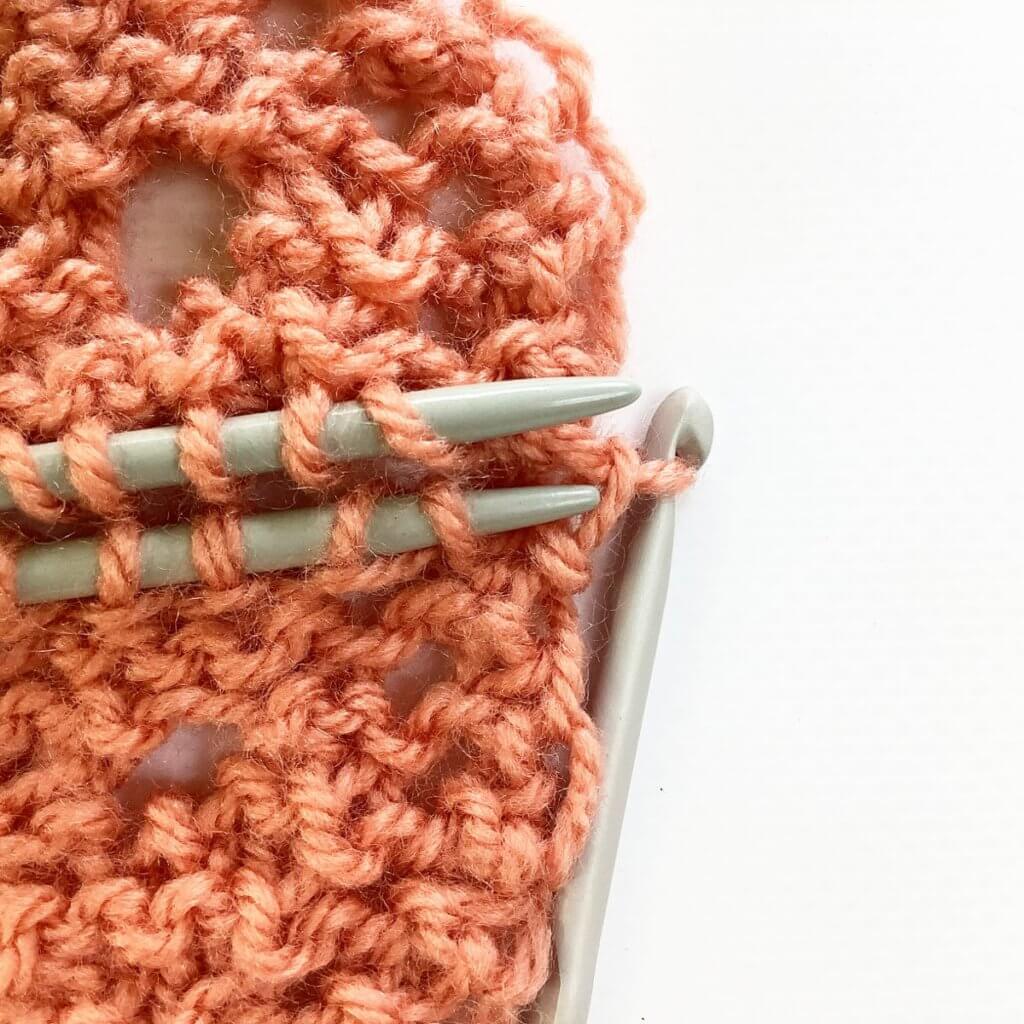
3. Front needle: Insert the crochet hook knitwise through the first stitch and slide it off the needle.
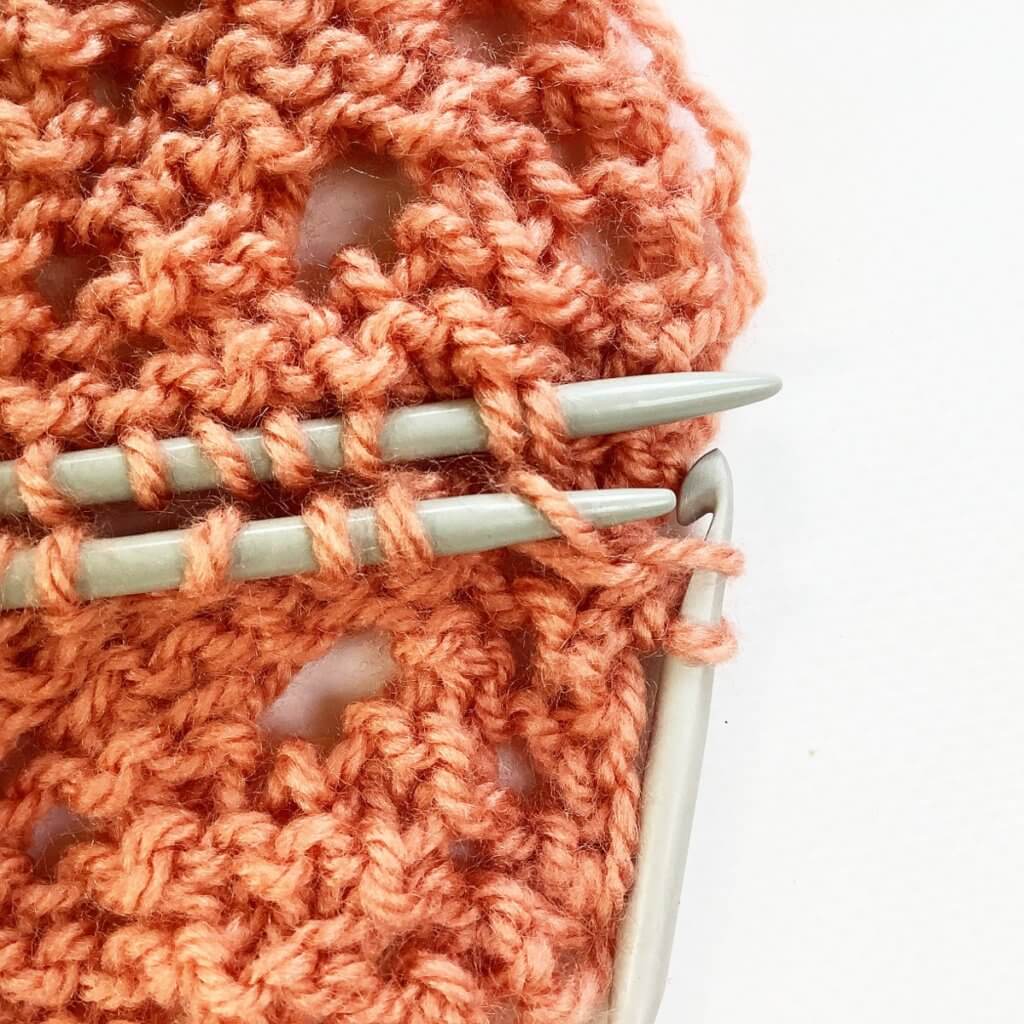
4. Pull this last stitch through the first stitch on the hook, so only 1 loop remains on the crochet hook.
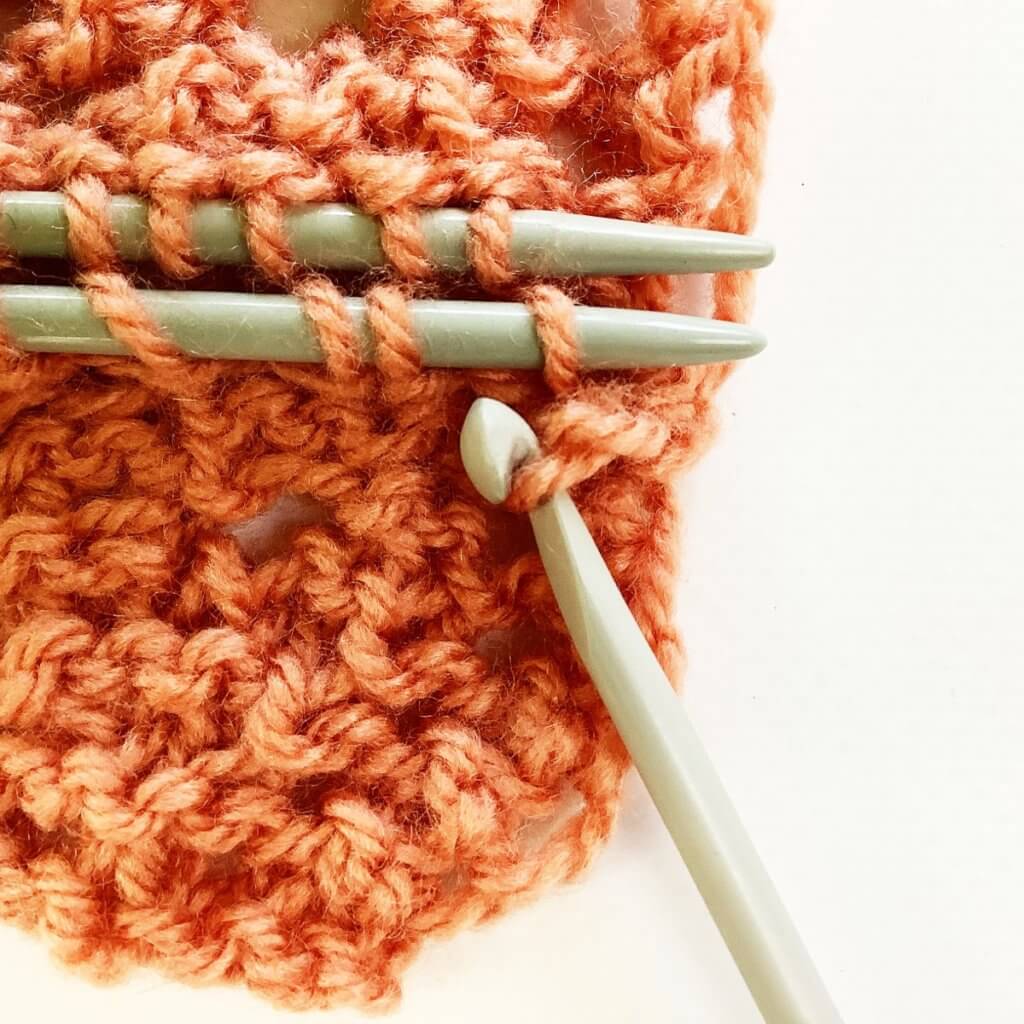
Repeat steps 1-4 until all stitches have been worked. At this point you will have 1 stitch remaining on the crochet hook:
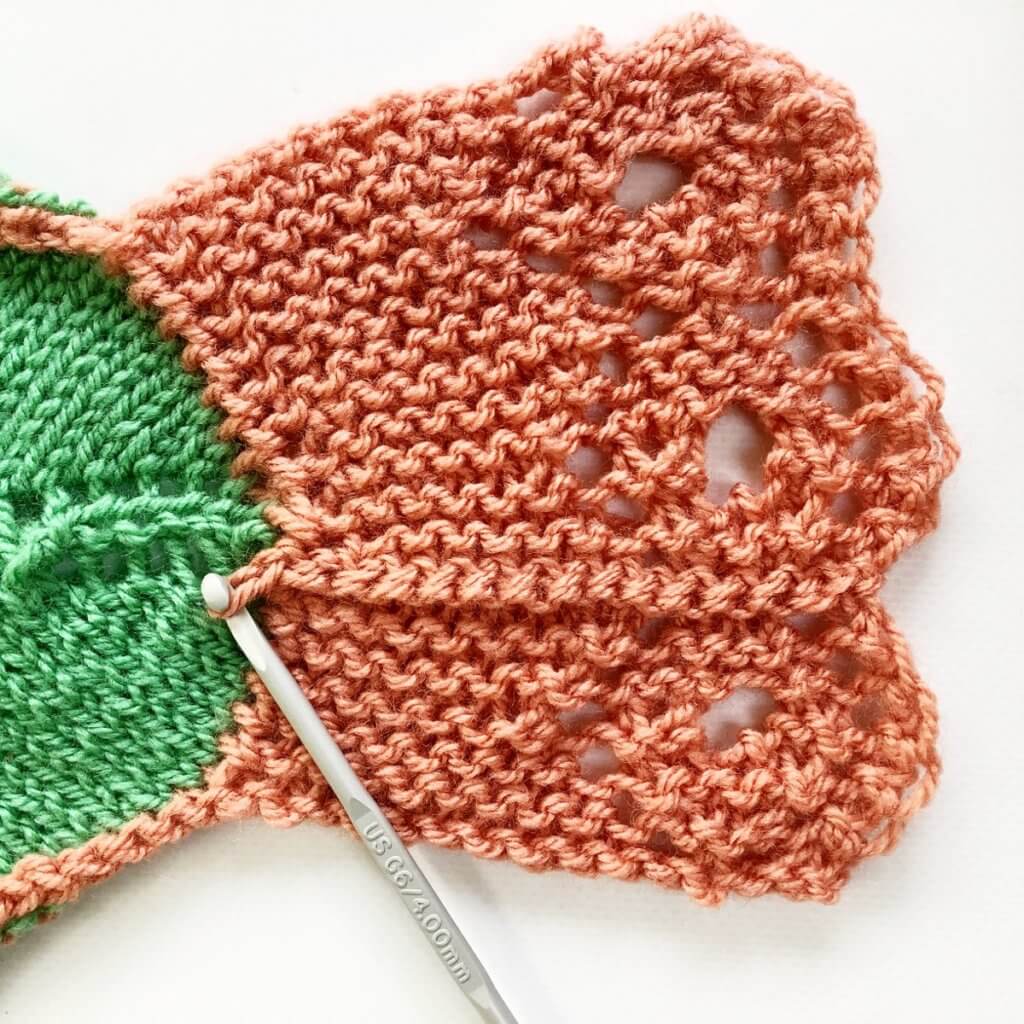
To finish the graft, pull the yarn tail through this last stitch to secure it. And there you have it! The seam may seem bulky, but that’s mostly because I’ve used relatively thick yarn here. When using fingering weight yarn at a loose gauge, it will blend in nicely in garter stitch!
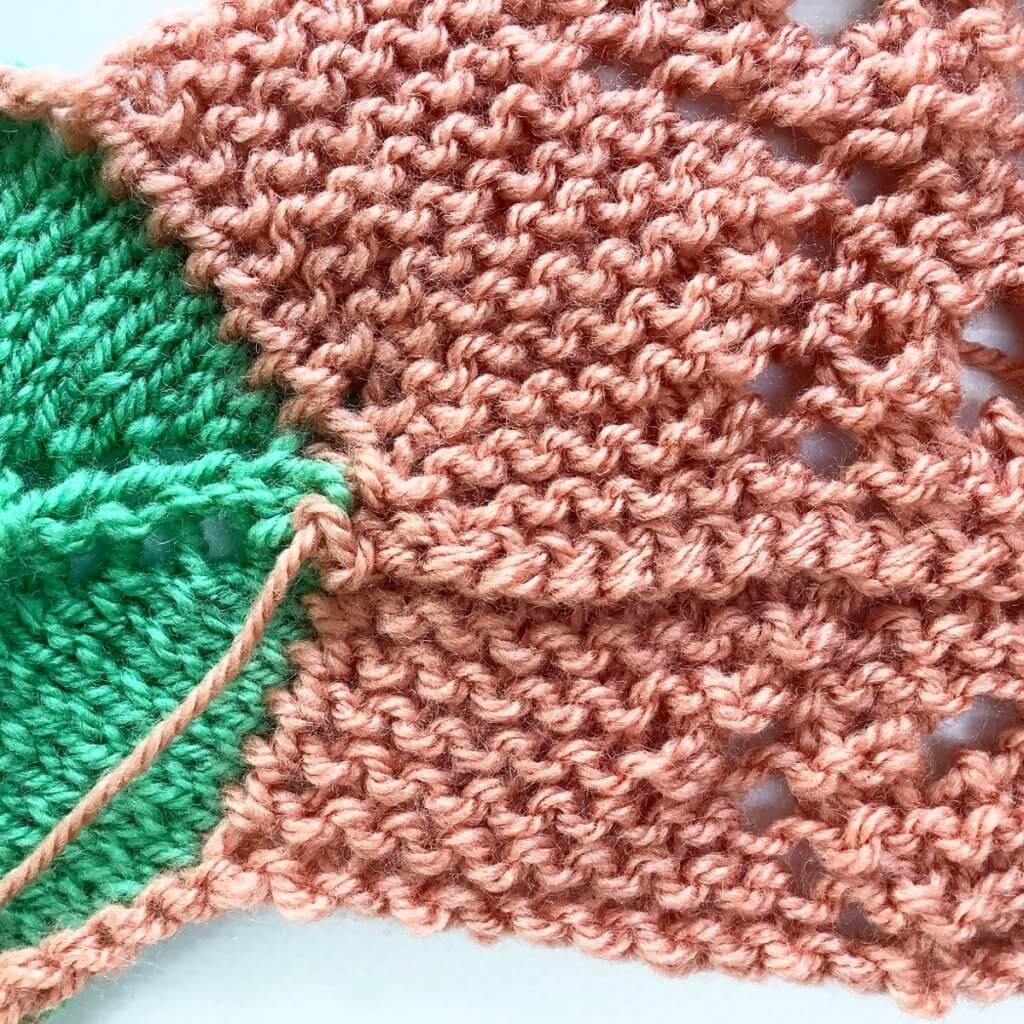

Thanks to my Patreon supporters for bringing you this freebie! Creating quality patterns and tutorials is a lot of work and resource-intensive. However, I find it important to give you free content like this tutorial. Thanks to the generous support of my Patreon supporters, I can make it happen. Thank you, patrons! Click here to join, or click here to read more about La Visch Designs on Patreon.

